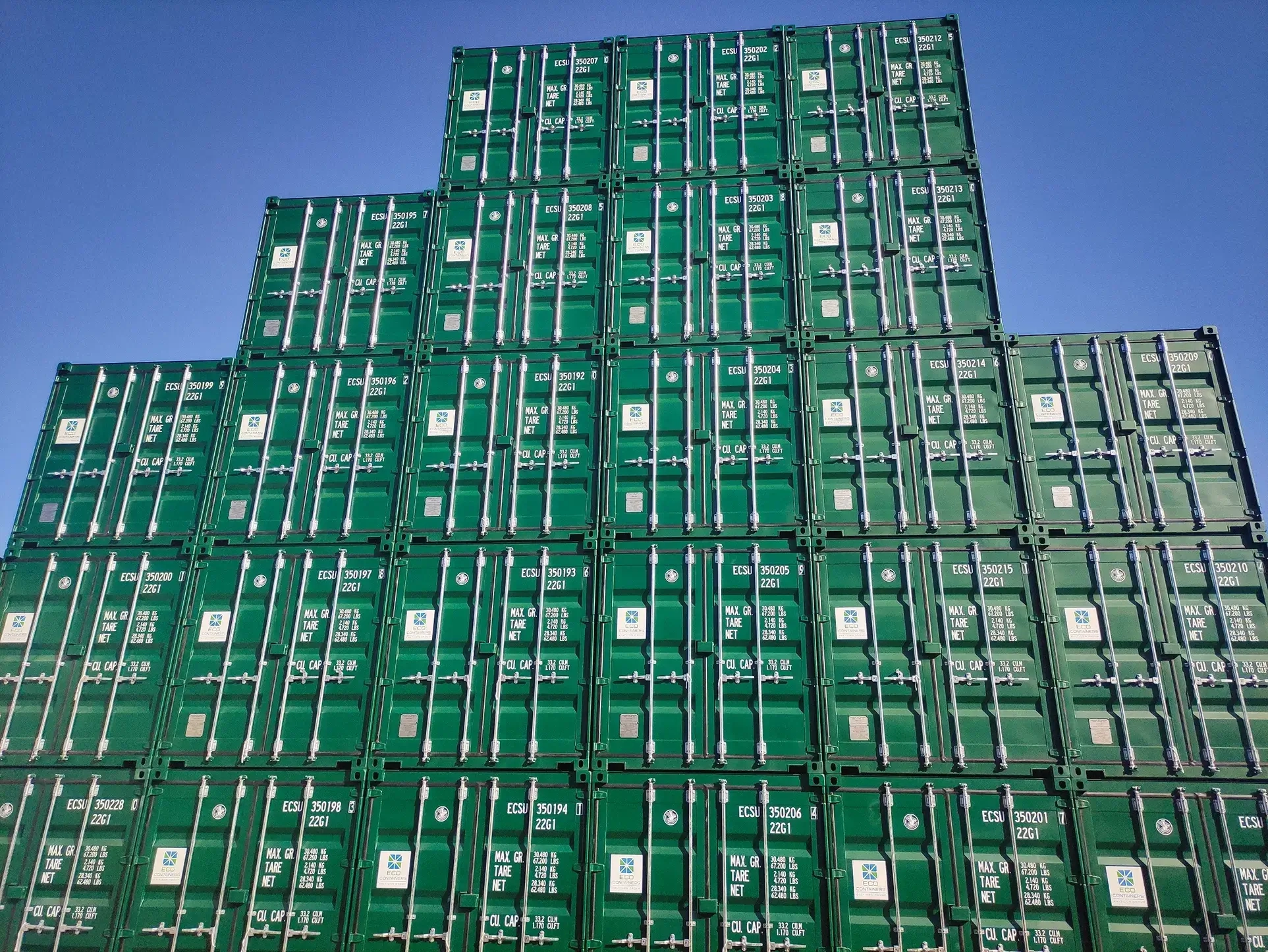Kontenery morskie mają zróżnicowane ceny, które są zależne od wielu czynników, m.in. stanu technicznego czy ic...

Sea containers
Shipping containers are enclosed structures with unified dimensions, which are used on a daily basis mainly in sea and road transport. They fulfill a storage function and are used to transport cargo, usually packed in cartons, crates or placed on pallets. Containers protect goods from damage and harmful weather conditions. They most often come in regular or elevated sizes: 10’, 20’, 40’ and 45’.
Shipping containers are based on steel bases, corner posts, four longitudinal beams and four perpendicular cross beams. Walls and roofs are welded to the frames. The doors of the containers are closed with bolts and secured with rubber seals. Inside, there are container corner fittings at each corner, used for loading, securing cargo, preventing uncontrolled movement and protecting goods from damage. They have a floor that can withstand heavy loads.
Types of shipping containers
Standard containers are shipping containers without any additional facilities for goods. Their most popular lengths are 6 and 12 meters (20 and 40 feet, respectively). Due to their unified dimensions and versatile nature, they most often perform their functions as warehouses and in road transport and shipping. Standard shipping containers are best suited for transporting small amounts of relatively light goods - this allows for consolidation of loading, up to the High Cube elevated containers, which can be beneficial in reducing costs.
High Cube containers are 30 cm higher than standard containers. HC containers allow easier loading and maneuvering of goods inside. They also work well with taller goods. There are also extended versions - Pallet Wide with lengths of 40' and 45'. These are some of the roomiest containers on the market.
The walls, gates and ceiling of insulated containers are covered with mineral wool about 10 cm thick. They are finished with MFP panels. These elements protect the cargo inside from the weather. They are built on the basis of used, refurbished and new containers. It is possible to equip them with the necessary installations, such as electricity, plumbing.
A characteristic feature of Open Top containers, distinguishing them from other types, is the open roof. The cargo is secured from the top with a tarpaulin (sheet) with a rope with a customs seal. The partially open design allows for the transportation of goods exceeding the height of a standard container and facilitates the handling of cargo. Thanks to them, after loading oversized freight, the transport is immediately ready to go.
Bulk is one type of special containers. It is designed for transporting and storing bulk goods, such as malt, coffee or oats. Loading is done through special loading chutes at the top, and unloading is done through gates. In case the goods do not fill the entire container, the handles mounted inside are useful for additional security.
Flat Rack containers were created for extremely heavy and oversized cargo. They do not have two walls or a roof. The front walls are firmly set and the floors are reinforced. The constructions are extremely durable, and additionally have the ability to fix, secure and pile up the transported goods. This is important especially on long hauls.
Full Side Access are containers that, in addition to a standard door on one of the shorter sides, also have doors on the side walls that open all the way. This makes loading easier, and in addition, when goods need to be unloaded that are in the cavity of the interior, there is no need to unload the preceding contents.
Off-Shore are special-purpose containers for storing and transporting materials used, for example, in the oil and gas industry. They have a reinforced construction, specially prepared for extreme conditions. They can be used on offshore platforms thanks to additional hooks installed.
Double Door containers were created based on standard containers. Thanks to their design, they are highly mobile. They have two pairs of doors, so goods can be loaded from two sides simultaneously. There is also a High Cube version, 30 cm higher for cargo of unusual size.
Advantages of shipping containers:
Buy or rent a container
Buy or rent a container
Kontenery morskie przebywają wiele kilometrów między kontynentami, często kilkoma środkami transportu. Tak dłu...
Kontenery w logistyce przechodzą często długą drogę od nadawcy do odbiorcy w dodatku różnymi środkami transpor...
Transport kontenerów na przestrzeni ostatnich lat kształtował się dość dynamicznie. Na jego rozwój miał wpływ ...
Kontenery morskie występują na rynku w różnych rozmiarach i typach. Każdy model ma swoją określoną cenę, która...
Branża kontenerowa na przestrzeni lat mocno się rozwinęła. Obecnie kontenery nie są jedynie puszkami do transp...
Questions and answers: